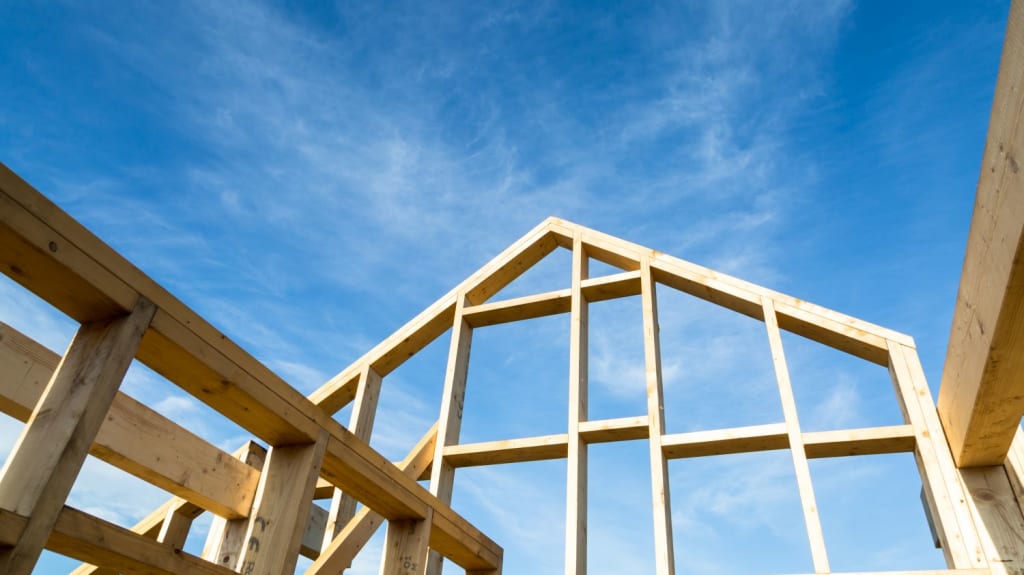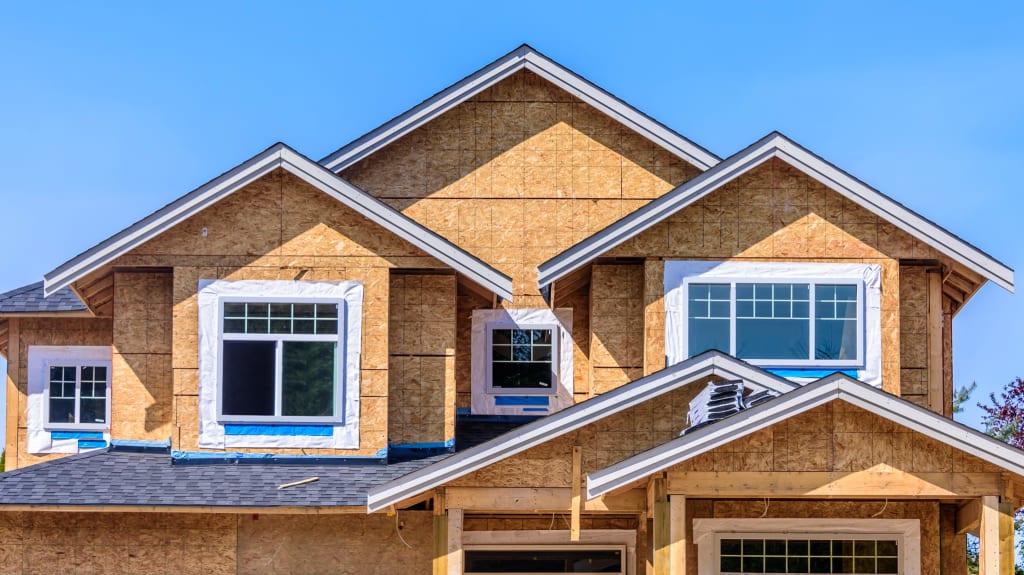A lot of questions quickly come up when it’s time to start a new construction project, but their answers aren’t always easy to find. Many people don’t recognize the amount of planning that goes into construction projects. Land selection, floor plans, construction… we explore all the options available to you when building a house.
Buying land to build and choosing a floor plan
Whether you want to live in a city, in a small town, beside a lake, or near the woods, first you need to find a lot to lay your foundation. Once the perfect spot has been chosen, you can pick an existing or custom floor plan.
Finding a lot
Do your research to find the best lot and talk it over with the developer. Some developers require you to build with specific contractors while others leave the choice up to you. A real estate agent or notary can also help you find a lot to build on. Once you have chosen your land, you have to consider what type of house suits your taste, needs, and budget.
Existing floor plans
An architect or architectural technologist can help you create a floor plan that aligns with your vision. Single-storey, multi-storey, or a cottage? Modern, colonial, or country style? The choice is yours!
Many architectural firm websites are filled with existing plans. A good example is Drummond House Plans, which offers more than 1,000 plans that you can order online or customize to your liking. Browsing through existing plans is a good first step to find out what you prefer.
It’s possible to modify a plan if the selected model does not work with your land or you want to customize it further. Some sites allow you to adjust the plans of your future home in a few steps.
Custom floor plans
If you don’t find the perfect floor plans, you can get a completely customized plan based on your preferences and the features of your plot. The specialist you consult will also be able to incorporate the materials and colours you want to have in your new home.
Ready-to-build floor plans
If you want to go with a ready-to-build (prefabricated) home, some manufacturers let you provide your own plans. However, most of the time you will have to choose from plans offered by the company. Some manufacturers also have a limited number of models available, so you may need to shop around to find the one that is right for you. Note that plans offered can usually be customized.
Now that you have your land and a customized floor plan, it’s time to build! Explore the possibilities below.

Self-build, factory built, or general contractor?
There are three options to choose from when building your house. Let’s go over what each one entails as well as what to consider before making a decision.
Self-builds
As the name suggests, a self-build involves managing the construction process yourself. The self-builder will take charge of the project and complete aspects of it. Other work, however, will need to be done by licensed contractors (excavation, plumbing, electrical, etc.). You’ll also need to follow provincial and municipal regulations regarding permits, zoning restrictions, building standards, siding, etc.
Moreover, you’ll need to learn how to get a loan for a self-build project. For example, many financial institutions require applicants to submit a detailed plan that outlines building costs and the project timeline. The loan is then disbursed at different stages of the project.
This way of building certainly has financial benefits for those who know the construction world. This option might be right up your alley if you have already built houses or have an experienced person in your life who can support you and if you’re willing to invest a lot of time in and devote endless nights and weekends to your project. This homebuilders’ guide offers helpful information to those interested in tackling a self-build.
If you’re a first-time buyer, don’t know much about the construction industry, or lack contacts with the time or expertise to help, you may want to consider another option.
Construction is a profession, after all. The worst mistake you could make would be to try to do things yourself to save money. Delays and mistakes will add up and cost you in the long run.
Factory-built homes
Another option is to get in touch with a factory-built (or prefabricated) home manufacturer. Simply choose from their services and they’ll build your future home in ideal conditions, inside a factory, away from the elements.
One of the advantages of factory-built homes is that you can handpick decorative elements at the manufacturer’s office. Things like the positioning of electrical outlets, exterior cladding, and cabinets can be selected with a company designer. That said, while the suppliers can offer a wide range of products, you may be limited in what you can select.
Factory-built home manufacturers are also subject to warranty programs that protect you, such as the Guarantee Plan for New Residential Buildings.
In addition, prefab companies pride themselves on their ability to optimally manage materials, reuse waste materials, and limit overall waste. Some prefab companies also specialize in sustainable building. For example, Énergéco manufactures energy-efficient prefab homes and Bâtiment Pré-Fab builds energy-efficient cottages.
Be aware that you may need to manage certain parts of the build yourself. Clients generally need to apply for permits and hire professionals to do excavation, build the foundation, and complete the finishing touches.
What about value and quality? This type of construction is as good as building with a general contractor.
Building with a general contractor
The most well-known approach is hiring a general contractor. They’re in the best position to help you with your project – they’re regulated by government agencies, experienced, and have completed all the training necessary to obtain a licence from the Régie du bâtiment du Québec!
The advantages to hiring a general contractor include expert worksite management and smooth progress from one stage to the next. The contractor also usually has insurance that covers you in case of damage (fire, water damage, etc.) that occurs during the work. What’s more, most contractors get a discount from building suppliers.
Building with a contractor, commonly called the turnkey formula, is often the option chosen to avoid worksite mishaps. Despite their presence, you will still have to make hundreds of decisions, so choose your contractor wisely!
Ready to build?
It’s up to you to select a floor plan and the type of construction! It’s a good idea to familiarize yourself with the options available and talk to people who have built their homes using them. After much research and deliberation, you can choose the option best suited to you to bring your new home to life.
Happy building!
Author : Yves Carignan President & CEO, Drummond House Plans
Originally from Windsor, ON, Yves Carignan has a degree in business administration with a specialization in marketing from the University of Sherbrooke. In 1997, he started at Drummond House Plans in network development. In 2002, he and his wife Marie-France Roger purchased the company and have been managing it ever since. Yves is a father of three and spends his free time practicing hockey, golf, and cycling. He also enjoys going on walks and taking trips.





